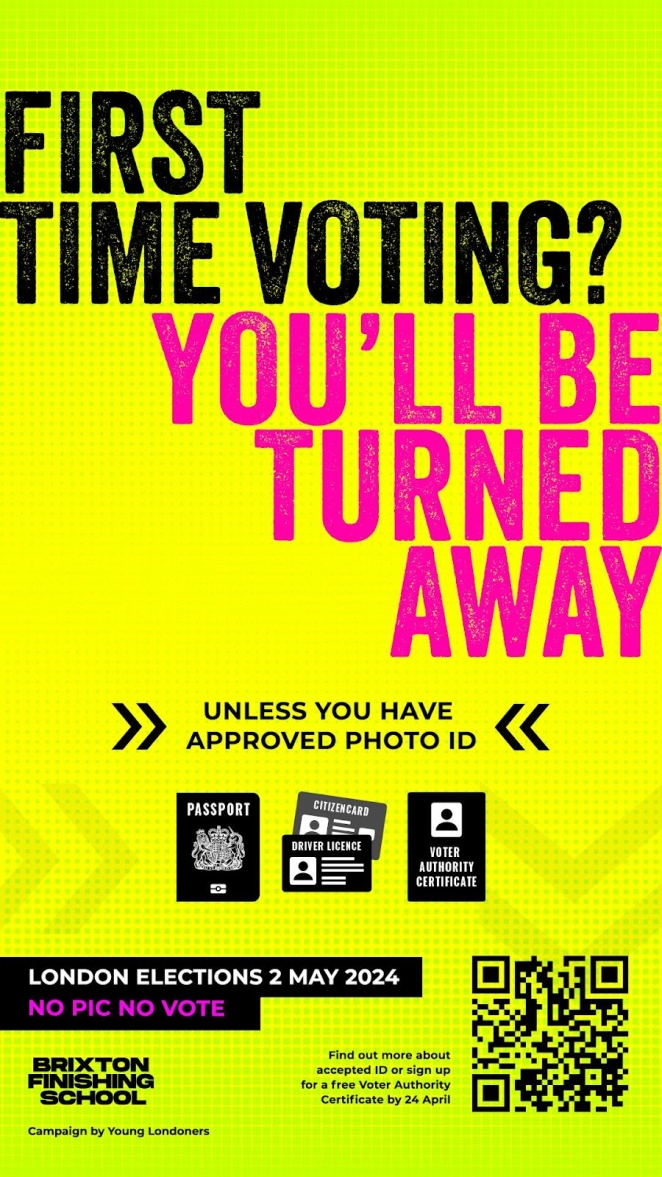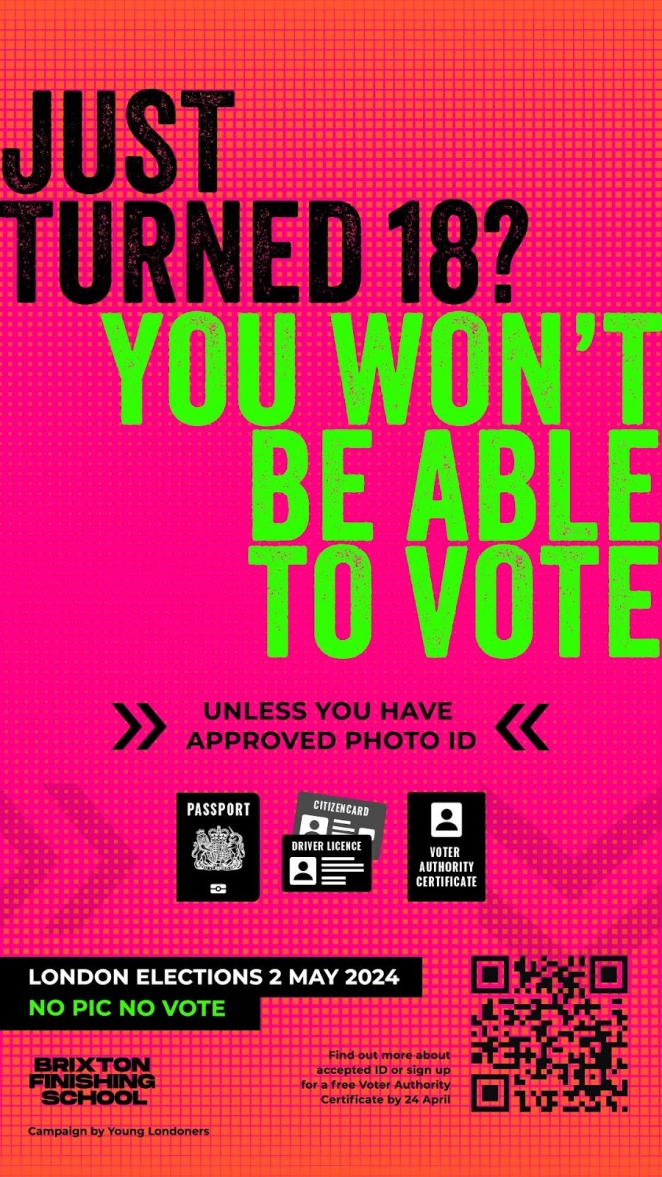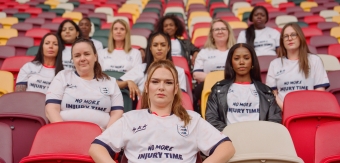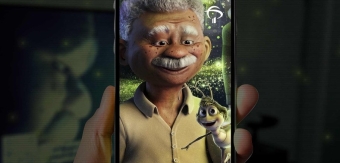OLIVER recently created a pan-London OOH campaign entitled “No pic, no vote” to raise awareness among young people of the need for photo ID to vote for the London Elections which took place on 2 May 2024.
Led by a group of young Londoners from the Brixton Finishing School, supported by the Mayor’s Fund for London and backed by the JC Decaux Community Channel, the OOH campaign aimed to drive younger voters to find out more about voter ID and registration ahead of the vote.
Appearing across prominent London locations including King’s Cross, Blackfriars, and St Pancras, the campaign raises awareness of alternative forms of ID from costly passports or driving licenses, to the free Voter Authority Certificate, and the deadlines for accessing them.
In addition, the digital screens include QR codes which link to the politically independent Democracy Hub, where people can access voter information.
To learn more we spoke to OLIVER Creative Director Magnus Thorne and Senior Strategist Daniel Bridge.
What was the brief?
Youth voter turnout in London is poor, mirroring a wider decline in public participation. Traditional party systems, once cultural hubs for voting engagement, have crumbled, with today's "retail" politics lacking the community connection that motivated past generations and taught communities to vote. This is why Gen Z are the last in the line of generations that have increasingly not passed down the traditions and social kudos of voting.
Research suggests more than 180,000 Young Londoners* (one in four) aren’t aware of Voter ID requirements and could be excluded from voting on polling day. Young people from lower socio-economic backgrounds are less likely to vote than their peers and may also be less likely to have a passport or driving licence (both amongst approved forms of voter ID) due to affordability.
So, the key question we needed to tackle after this was brought to our attention following a conversation with the Young Londoners Coalition, was: what can be done to turn this generation back to voting, support them in overcoming increased barriers to voting, and ultimately form a habit that means their generation holds more power in our electoral system?
There were several campaigns already out there talking about Voter ID but none of them really did the job of tackling the specific issue of voter ID for young people in London on a mass scale.

The Electoral Commission’s work aimed at a broad audience
How did the initial pitch/brainstorming phase go?
Given that the democratic process was at the heart of this brief, we brought that into the way we tackled the project – with an open brief sent around the whole agency for an engaging OOH campaign. We wanted as many different points of view as possible. And that’s exactly what we got back – a broad and diverse selection of ideas that tackled the brief from a number of angles.
What was also interesting was that although the brief was aimed at young Londoners our conceptual teams working on it ranged in age from 20 to 60, and what we found was that you didn’t have to be in the younger age group to communicate effectively with the target demographic.
What was the process behind ideating the concept?
What was different was that we essentially had the client presentation and creative testing folded into one presentation, as our partners on this project brought along a selection of the target audience to the presentation to get their gut reaction to the work. Young people from Brixton Finishing School and the Youth Board of the independent charity Mayor’s Fund for London provided feedback which was on point, insightful and occasionally brutal…but it definitely led to better and more effective work.
Kata, one of the young people involved in the campaign, said, “The team at OLIVER invited us in so that we could help make the campaign more powerful in order to grab the attention of young Londoners and make sure they understand the requirements to bring the correct Voter ID to the London elections in May.”

Phool, another young person involved, said, “Raising awareness on Voter ID is essential if we are to increase youth participation in voting. Change for young people won’t happen if they are not given the opportunity to give their input. I found the creative process incredibly insightful and important - asking opinions from young people on issues concerning young people was key to create an outcome that will resonate with many.”
What was the production process like?
There was an extensive design phase where the posters were crafted to achieve maximum stand out and appeal to our target audience. Getting 18-year-olds to pay attention to political posters is not easy, so we used every craft trick we could; from the way the headlines were written to the choice of font, colours and design, to make sure they would be engaged.
What was the biggest challenge during production? How did you overcome it?
The biggest challenge was a combination of starting with no budget, no media and no time. It meant we had to deliver punchy ideas that could be turned around quickly at low cost. We leveraged relationships with Brixton Finishing School and JCDecaux Community Channel, to turn our idea into a campaign.
What kit/tools/software were used to create the project?
Photoshop, Illustrator, and After Effect.
What is one funny or notable thing that happened during production?
Given that we opened the brief to such a wide pool of creatives we had a really varied range of responses – and to be honest not all of them were suitable to put out onto the streets of London!
What’s the main message of this project and why does it matter?
To let young Londoners know that in the upcoming Mayoral election, if they didn’t take photo ID to the polling booth, they wouldn’t be able to vote. This is a hugely important message, especially as almost all our audience would be first-time voters. Their votes count and their first experience of casting a vote should be one that doesn’t put them off getting involved in the democratic process.

The Out-of-Home campaign, delivered in partnership with JCDecaux Community Channel, drove people to find out more about voter ID, voter registration and anything else they might need to know at the Democracy Hub (a politically independent source of voter information). QR codes on rail and roadside posters enable visitors to find out more there and then.
How long did it take from inception to delivery?
We worked with a rapid turnaround time to get the message out with enough time for Voter ID registration. From brief to conception to delivery on Digital OOH around London was about 2-3 weeks.
What do you hope it achieves for the brand?
We set out a clear ambition: This May, no young voter in London will be turned away from a polling station for not having Voter ID.

It’s clear that one person in particular didn’t see the work – as Boris Johnson was turned away on polling day for forgetting his!
Credit list for the work?
Creative Directors – Magnus Thorne and Paul Turner, OLIVER
Senior Strategist – Daniel Bridge, OLIVER
Head of Planning– Nick Myers, OLIVER
DOOH Provider – JCDecaux Community Channel
Partners – Brixton Finishing School, The Youth Board at Mayor’s Fund for London
PR – Nuala Doyle, OLIVER, and Velvet PR





